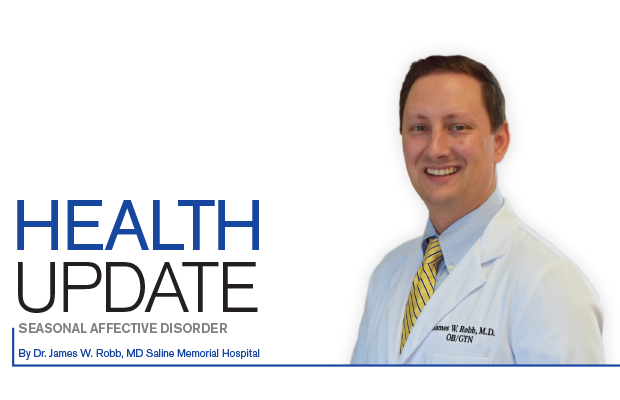Seasonal Affective Disorder

As the fall and winter months approach, it is an important time to focus on your mental health. These months can be stressful. Not just because school has started back up and your morning commute is twice as long, or even because there are more football games. The shorter fall and winter days can contribute to a condition called Seasonal Affective Disorder (SAD), which affects up to 3 million people per year in the US.
SAD is a type of depression that comes and goes with changes in the seasons. It is important to recognize the symptoms so that treatment can be started. Symptoms to look out for are many of the symptoms in standard depression most people think of, including:
Sleep changes (loss of sleep at night OR increased sleeping during the day)
Loss of interest in activities
Feelings of guilt or worthlessness
Lack of energy or fatigue
Difficulty concentrating
Loss of appetite
Agitation or anxiety
Thoughts of self-harm or harm toward others
Just because SAD will come and go with the seasons does not mean it doesn’t warrant attention or treatment. Like other forms of depression, there are multiple methods to treat SAD. The exact cause of SAD is unknown, but research shows that increased exposure to daylight can improve symptoms.
Sometimes artificial light can be used to simulate natural light and can change chemicals in the brain linked to mood. Standard therapies for depression such as psychotherapy and medications, or a combination of any of the three are frequently used for treating SAD.
In the field of OB/GYN, we typically will see depression arise during the postpartum period. It can also present during the pregnancy. Many of the symptoms of SAD are similar to expected symptoms of pregnancy and after delivery, making the diagnosis difficult.
The American College of Obstetricians and Gynecologists estimates that 14-23% of pregnant women experience depression during pregnancy, and 5-25% experience depression postpartum. With a significant number of women experiencing post-partum depression (PPD), standard screening techniques are recommended at every post-partum visit. Postpartum surveillance should be individualized for every patient because every pregnancy can come with new experiences that can increase or decrease the risk of PPD.
The seasons affect pregnant patients as well. A recent study by Deepika Goyal, a professor of nursing at San Jose State University, found a significant difference in the rate of depression based on the time of year a woman delivered her baby.
They found that if the third trimester coincided with the shorter daylight hours of winter, there was a 35% risk for depression. On the other hand, if the third trimester coincided with longer daylight hours of summer, the risk of depression was 26%.
So, as we see our days get shorter, be aware of your mood changing. If you notice that you are starting to feel down more than usual, try to spend more time outside. If it’s too cold to take a walk, even driving around or taking a short trip to go shopping or out to lunch can help boost your mood. And if you feel that you need additional help, please call your provider and make an appointment.










0 comments